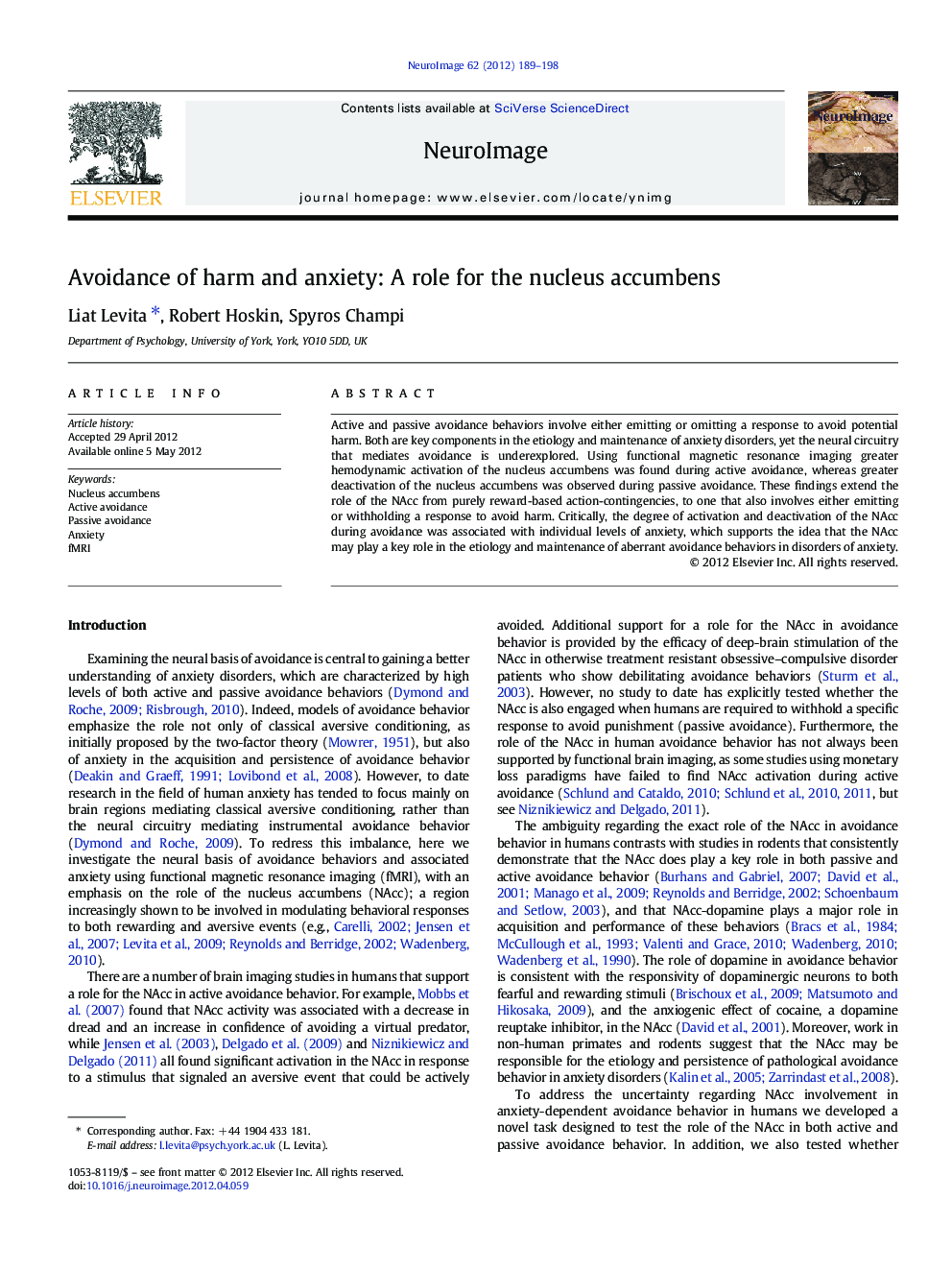| Article ID | Journal | Published Year | Pages | File Type |
|---|---|---|---|---|
| 6031866 | NeuroImage | 2012 | 10 Pages |
Active and passive avoidance behaviors involve either emitting or omitting a response to avoid potential harm. Both are key components in the etiology and maintenance of anxiety disorders, yet the neural circuitry that mediates avoidance is underexplored. Using functional magnetic resonance imaging greater hemodynamic activation of the nucleus accumbens was found during active avoidance, whereas greater deactivation of the nucleus accumbens was observed during passive avoidance. These findings extend the role of the NAcc from purely reward-based action-contingencies, to one that also involves either emitting or withholding a response to avoid harm. Critically, the degree of activation and deactivation of the NAcc during avoidance was associated with individual levels of anxiety, which supports the idea that the NAcc may play a key role in the etiology and maintenance of aberrant avoidance behaviors in disorders of anxiety.
⺠Response to threat, not just reward, is mediated by the NAcc. ⺠Distinct NAcc activity when emitting or omitting an action to avoid punishment. ⺠Anxiety levels predict the degree of NAcc activation during avoidance behavior.
